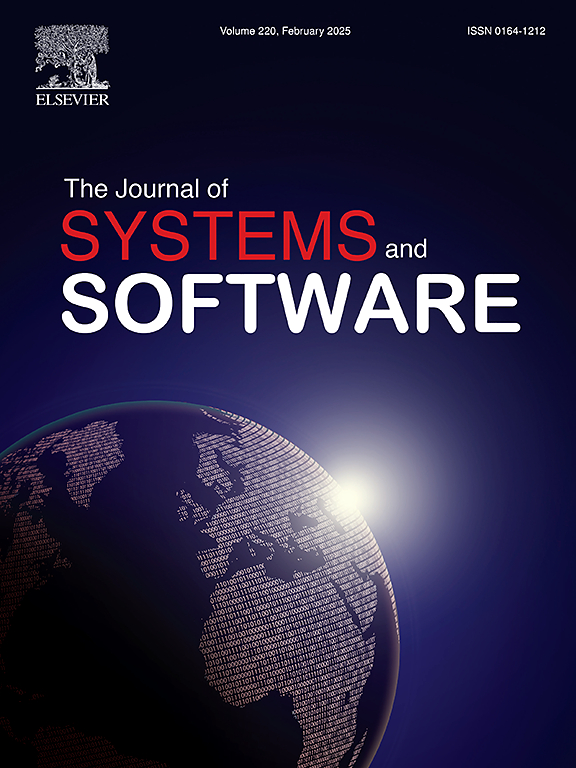Fault analysis in additive manufacturing: Identifying causes of three-dimensional printer faults using machine learning and large language models
IF 4.1
2区 计算机科学
Q1 COMPUTER SCIENCE, SOFTWARE ENGINEERING
引用次数: 0
Abstract
Fault detection in additive manufacturing, particularly within 3D printing systems, is a critical issue that impacts the quality and reliability of the final products. Solving these challenges is essential for ensuring high standards and consistent performance in manufacturing processes. We have developed a sophisticated system that combines traditional machine learning classifiers with advanced convolutional neural networks (CNNs) and large language models (LLMs) to enhance fault detection and diagnostic capabilities. This system employs diverse machine learning models to achieve robust image-based fault classification, supported by CNNs and cutting-edge prompt engineering techniques. Central to our approach is the Prompt Evaluation Framework (PEF), which leverages strategies such as zero-shot prompting, chain-of-thought, and directional stimulus prompting to refine interactions with LLMs. This framework enables the dynamic generation of personalized explanations and resolution strategies for detected faults, thereby enhancing accessibility and usability for users across different technical backgrounds. Our experimental results indicate that this integrated methodology not only improves the accuracy of fault detection across various fault types but also significantly enhances the interpretability and usability of the outputs. These findings have considerable practical implications for quality control in additive manufacturing, highlighting the potential for broader applications in intelligent, interactive fault diagnosis systems. By leveraging the power of machine learning and LLMs, our work represents a significant advancement in methodologies for 3D print fault detection and resolution.
增材制造中的故障分析:使用机器学习和大型语言模型识别三维打印机故障的原因
在增材制造中,特别是在3D打印系统中,故障检测是影响最终产品质量和可靠性的关键问题。解决这些挑战对于确保制造过程中的高标准和一致的性能至关重要。我们开发了一个复杂的系统,将传统的机器学习分类器与先进的卷积神经网络(cnn)和大型语言模型(llm)相结合,以增强故障检测和诊断能力。该系统采用多种机器学习模型,在cnn和前沿提示工程技术的支持下实现鲁棒的基于图像的故障分类。我们的方法的核心是提示评估框架(PEF),它利用诸如零射击提示、思维链和定向刺激提示等策略来优化与llm的交互。该框架支持为检测到的故障动态生成个性化的解释和解决策略,从而增强了跨不同技术背景的用户的可访问性和可用性。实验结果表明,这种集成方法不仅提高了各种故障类型的故障检测精度,而且显著提高了输出的可解释性和可用性。这些发现对增材制造的质量控制具有相当大的实际意义,突出了在智能交互式故障诊断系统中更广泛应用的潜力。通过利用机器学习和法学硕士的力量,我们的工作代表了3D打印故障检测和解决方法的重大进步。
本文章由计算机程序翻译,如有差异,请以英文原文为准。
求助全文
约1分钟内获得全文
求助全文
来源期刊

Journal of Systems and Software
工程技术-计算机:理论方法
CiteScore
8.60
自引率
5.70%
发文量
193
审稿时长
16 weeks
期刊介绍:
The Journal of Systems and Software publishes papers covering all aspects of software engineering and related hardware-software-systems issues. All articles should include a validation of the idea presented, e.g. through case studies, experiments, or systematic comparisons with other approaches already in practice. Topics of interest include, but are not limited to:
•Methods and tools for, and empirical studies on, software requirements, design, architecture, verification and validation, maintenance and evolution
•Agile, model-driven, service-oriented, open source and global software development
•Approaches for mobile, multiprocessing, real-time, distributed, cloud-based, dependable and virtualized systems
•Human factors and management concerns of software development
•Data management and big data issues of software systems
•Metrics and evaluation, data mining of software development resources
•Business and economic aspects of software development processes
The journal welcomes state-of-the-art surveys and reports of practical experience for all of these topics.
 求助内容:
求助内容: 应助结果提醒方式:
应助结果提醒方式:


